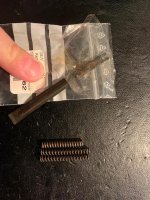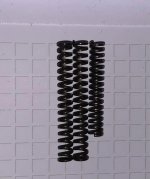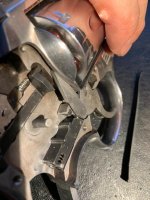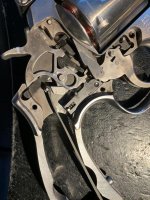Hello!
Got a used 3 year old SW. The seller said there was a different rebound spring.
Shot 50 rounds and worked perfectly.
Then I got the foolish idea to polish the internals. Watched several YouTube videos for different approaches and understandings.
Now I have a trigger that doesn’t always return every 10-15 pull. And this:
5 januari 2023 - YouTube
I have merely lightly polished the internals. No stoning. Left the SA/DA angles untouched.
Specially for the sear: What I did do was to polish the sear on the surface where the trigger drags as it returns.
When I polished the sides of the hammer and sear I removed the sear from it. The sear spring was very slightly bent but straightened out. Before installing it was straight.
Now the sear seems to get stuck and not “fall” into position.
I cleaned all parts and scarcely used weapon ptfe lube (applied and wiped off).
The result is a turning cylinder but no hammer movement.
With the slide plate on and main spring tightened it behaves the same.
The main spring screw is not tightened in the video.
Man do I regret I did this…
Please help…
Got a used 3 year old SW. The seller said there was a different rebound spring.
Shot 50 rounds and worked perfectly.
Then I got the foolish idea to polish the internals. Watched several YouTube videos for different approaches and understandings.
Now I have a trigger that doesn’t always return every 10-15 pull. And this:
5 januari 2023 - YouTube
I have merely lightly polished the internals. No stoning. Left the SA/DA angles untouched.
Specially for the sear: What I did do was to polish the sear on the surface where the trigger drags as it returns.
When I polished the sides of the hammer and sear I removed the sear from it. The sear spring was very slightly bent but straightened out. Before installing it was straight.
Now the sear seems to get stuck and not “fall” into position.
I cleaned all parts and scarcely used weapon ptfe lube (applied and wiped off).
The result is a turning cylinder but no hammer movement.
With the slide plate on and main spring tightened it behaves the same.
The main spring screw is not tightened in the video.
Man do I regret I did this…
Please help…




